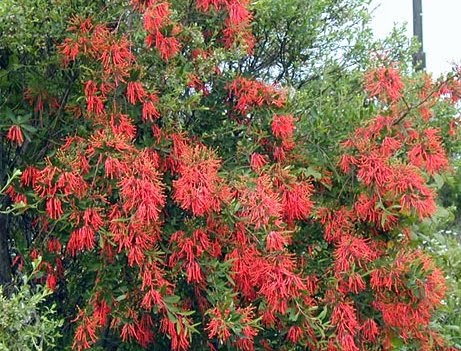When the weather in north Texas lingers
around 100 degrees, and won’t budge, it’ll undoubtedly take a toll on your
landscape. This inhumane heat is usually accompanied by relentless drought too,
which can spell doom for plants. There’s not much you can do to change the
temperature, but you CAN help your plants survive, although tender, non-native
plants are likely to wither away.
 |
| Red Yucca (native) |
Resist the temptation to plant new plants right now, unless you’re prepared to give them extensive daily maintenance. Many plants are nearly dormant in highhis heat anyway. (As a Landscape Architect, I tell my customers who want to plant now just to thow them right into the trash, after buying them. They’ll probably end up in the trash anyway, and you’ll be saving a step.)
Right now, mulch is essential. Just about
the worst thing you can do is rake up and remove all the “leaf litter” of dead
leaves, small twigs and dead plants that currently serve as a natural mulch,
keeping moisture from evaporating rapidly and providing a bit of much-needed
shade to the root-zone of plants.
For a grassy lawn, cut it as high as
possible. Grass won’t grow much in high heat anyway - so you may be able to cut
your grass just every other week. The lawn mower I have is now set at “4” (as
high as it will go). The logic behind this is that the millions of grass blades
provide shade for the root-zone of grass plants; and more shade means more
green grass and lower water usage.
When you do water, try not to let the water
run off – the object is to allow it to soak into the soil, encouraging roots to
grow deeper. Exactly how you accomplish this depends on the watering system and
the topography of your landscape. Some folks water for a just a few minutes,
every hour or so. Others water in the early morning. The method is not crucial,
just keep the goal in mind.
For potted plants and hanging baskets, try
putting lots of ice cubes on top of the soil. As they slowly melt they’ll
thoroughly water the plant, instead of letting much of it pour out the
drain-hole, as it does when liquid is dumped on all at once.
Speaking of water, put out as many
birdbaths as possible during the heat. Temporarily use anything that can hold
water, and refresh it daily. (an
upside-down garbage can lid is more enticing to birds than many “birdbaths”
I’ve seen sold in stores.)
Despite
everything, some plants are bound to die. That’s the natural process.
But remember, the cooler days starting in mid-September aren’t very far away.
OWEN
YOST, in addition to being a blogger, is a licensed Landscape Architect
emeritus who has lived and worked in north Texas for over 30 years. He is the recipient of a
Lifetime Achievement Award of the Native Plant Society of Texas, and is a member of the American Society of Landscape Architects (ASLA),
International Federation of Landscape Architects, National Wildlife Federation
and the Audubon Society. His office is at Yost87@charter.net in Denton.
No comments:
Post a Comment